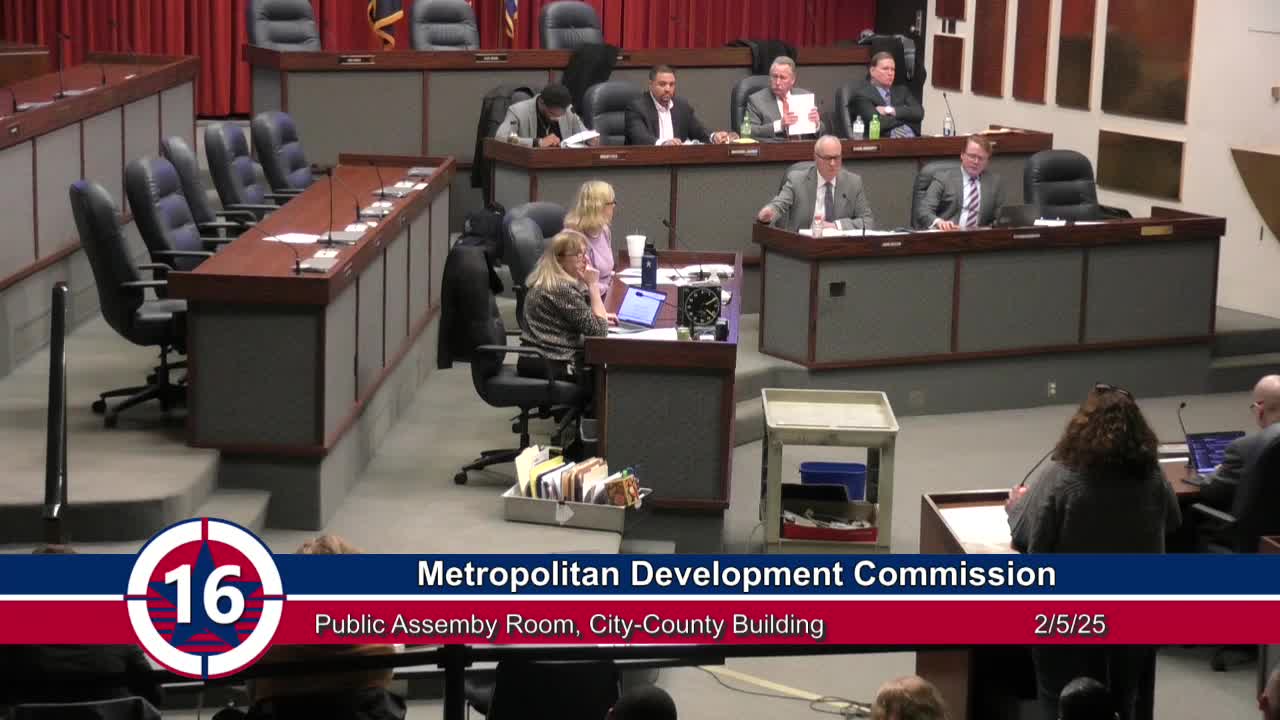Local Residents Demand Clarity on Proposed Church Development Plans
February 05, 2025 | Indianapolis City, Marion County, Indiana
This article was created by AI summarizing key points discussed. AI makes mistakes, so for full details and context, please refer to the video of the full meeting. Please report any errors so we can fix them. Report an error »

In the heart of Indianapolis, a recent meeting of the Metropolitan Development Commission brought to light the concerns of local residents regarding a proposed church development in their neighborhood. As community members gathered, the atmosphere was charged with apprehension and a desire for clarity about the changes looming in their backyard.
One resident stepped forward to voice the collective worries of the community, outlining a series of pressing issues that had emerged during discussions about the church's plans. The concerns ranged from potential flooding due to an expansive asphalt parking lot to fears of decreased property values and light pollution from the anticipated influx of vehicles during service times. The resident painted a vivid picture of family life disrupted by noise and traffic congestion, emphasizing the importance of maintaining a peaceful home environment.
Despite their eagerness to engage with the church's representatives, residents expressed frustration over a lack of transparency. The absence of essential plans—such as landscaping, lighting, and signage—left them feeling uninformed and anxious about the future. The resident highlighted that without these crucial details, the community was left "in the dark," unsure of how the development would impact their lives.
The meeting also revealed that the church had withdrawn its request for a variance that would have allowed for a zero lot line, a decision welcomed by the residents. However, the underlying concerns remained unaddressed, as the community sought more information and a collaborative approach to the development process.
As the discussion unfolded, it became clear that while residents were not opposed to the church itself, they yearned for a partnership that would ensure their voices were heard. They called for the church to complete necessary site plans before any special exceptions were granted, hoping to foster a sense of security and cooperation moving forward.
The meeting underscored a vital theme: the importance of community involvement in local development decisions. As Indianapolis continues to grow, the voices of its residents will play a crucial role in shaping the future of their neighborhoods. The call for transparency and collaboration resonates beyond this single issue, highlighting a broader desire for inclusive governance in urban development.
One resident stepped forward to voice the collective worries of the community, outlining a series of pressing issues that had emerged during discussions about the church's plans. The concerns ranged from potential flooding due to an expansive asphalt parking lot to fears of decreased property values and light pollution from the anticipated influx of vehicles during service times. The resident painted a vivid picture of family life disrupted by noise and traffic congestion, emphasizing the importance of maintaining a peaceful home environment.
Despite their eagerness to engage with the church's representatives, residents expressed frustration over a lack of transparency. The absence of essential plans—such as landscaping, lighting, and signage—left them feeling uninformed and anxious about the future. The resident highlighted that without these crucial details, the community was left "in the dark," unsure of how the development would impact their lives.
The meeting also revealed that the church had withdrawn its request for a variance that would have allowed for a zero lot line, a decision welcomed by the residents. However, the underlying concerns remained unaddressed, as the community sought more information and a collaborative approach to the development process.
As the discussion unfolded, it became clear that while residents were not opposed to the church itself, they yearned for a partnership that would ensure their voices were heard. They called for the church to complete necessary site plans before any special exceptions were granted, hoping to foster a sense of security and cooperation moving forward.
The meeting underscored a vital theme: the importance of community involvement in local development decisions. As Indianapolis continues to grow, the voices of its residents will play a crucial role in shaping the future of their neighborhoods. The call for transparency and collaboration resonates beyond this single issue, highlighting a broader desire for inclusive governance in urban development.
View full meeting
This article is based on a recent meeting—watch the full video and explore the complete transcript for deeper insights into the discussion.
View full meeting
